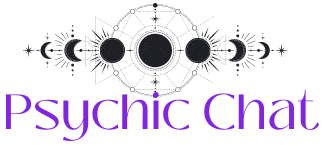Spirit boxes are often considered reasonable controversial devices. They work by quickly scanning through radio frequencies. It is thought that spirits can manipulate these frequencies to form words and sentences to communicate with the living people who are heard between the volatile outbursts of radioostatics and broadcasts.
Because these sounds are often difficult to choose from the background noise, they are open to subjectivity and wrong interpretation. This sensitivity is due to hearing or asking a question or listening to an answer to that question. For example, if someone asks: “How did you died?” There is a tendency to interpret ambiguous sounds as definitive answers, such as ‘killed’, based on the expectation of the question.
The Estes method is intended to create a more direct and less favored form of communication with the paranormal by isolation of the listener of the questions asked and the environment. This means that the interpretation of the reactions by the listener is less influenced by the power of suggestion or their expectations. This setup theoretically reduces the chance of incorrectly interpreting random noise as meaningful communication, a common criticism in traditional sessions.
The Estes method was developed in 2016 in the legendary Stanley Hotel in Colorado, a place famous for its spooky activity and as inspiration for Stephen King’s supernatural classic ‘The Shining’. The method was made by researchers Karl Pfeiffer, Connor Randall and Michelle Tate, who tried it for the first time on January 21, 2016, in a corridor in the basement of the hotel. They called the method of the area in which the hotel is located, Estes Park.
Karl and Connor also have the method popular by using it in their paranormal documentary series ‘Hellier’ 2019, which investigates the mysteries and paranormal phenomena in and around the small town of Hellier, Kentucky.
The ESTES method is similar to the Ganzfeld experiment, a psychological experiment designed to test for extrasensory perception (ESP) and telepathy, which uses a comparable method of sensory deprivation in which the eyes are treated and the use of headphones. Although both methods include changing the sensory input of a person, the Ganzfeld experiment is designed to improve the receptivity of the subject for telepathic communication, while the ESTES method focuses on spiritual communication.
The Estes method mainly uses a spirit box as the method of spiritual communication, but the underlying principles of sensory deprivation and targeted listening can be used with other tools and technologies within paranormal research. There are various apps and software that are designed for paranormal research that generate sounds, words that generate audio files in real time. These can be used with headphones in an estes method setup, where different types of audiocues are investigated for spiritual communication.
The method can also be used for real-time EVP sessions (electronic voice phenomenon). EVP have been found in electronic recordings that are interpreted as Spirit voices that were not heard by the human ear at the time of recording or seem to be in response to questions from researchers.
In a real-time EVP session, researchers listen to the audio that is recorded in real time through headphones connected to the recorder. This method strengthens the sounds of the immediate environment, making it easier to detect subtle sounds and potential EPPs when they occur.
By integrating the ESTES method with real-time EVP monitoring, researchers can improve their ability to detect subtle auditory phenomena when they occur. The isolated listener becomes a dedicated guidance for auditory deviations. This direct and targeted listening approach ensures the immediate identification and communication of potential EPPs with other team members, which facilitates a more dynamic and interactive research process.
The Estes method, although innovative in its approach to spiritual communication, bears various issues that make doubts about its effectiveness in the complete removal of subjectivity. The method is designed to minimize bias by isolating the listener of external influences and questions. However, it is not completely watertight against the inherent subjectivity of human perception.
For example, if a researcher knows that he is at a location for a tragic history, their mental framework can be prepared to interpret sounds as messages related to that tragedy, even without hearing the specific questions asked by other team members. This psychological predisposition underlines the challenge of fully eliminating subjectivity of paranormal studies, which emphasizes the nuanced role of human perception in interpreting potential paranormal phenomena.
Confirmation advantage can significantly influence the interpretation and observed validity of reactions in an ESTES method session, in particular among the researchers who are not isolated. These researchers, who ask questions and listen to the answers passed on by the isolated participant, can accidentally answer cherry picks. This tendency includes selectively aimed at the “hits”, those who seem relevant or immediately answer a question asked, while ignoring or minimizing the importance of “misses”, those answers that do not match the questions or do not seem relevant.
This selective attention can lead to an overestimation of the effectiveness of the ESTES method, because researchers can attribute a higher significance to coincidences or cases where the answers seem to meet their expectations. By emphasizing reactions that match their story or hypotheses about the spooky and overlooking those who don’t do that, researchers can strengthen their belief in the validity of the method without fully explaining to the entire spectrum of answers, including those who do not support their expectations.
Despite these issues, many in the paranormal community find value in the Estes method for the potential to offer a more direct and less biased form of spiritual communication. Although it may not remove completely subjectivity, it introduces a new approach that can produce intriguing and sometimes compelling results.
How to perform a Spirit Communication experiment using the ESTES method
Performing a paranormal experiment using the ESTES method includes a simple arrangement, but requires attention to detail to guarantee the integrity of the experiment and the reliability of results obtained. Here is a step-by-step manual, including tips and best practices, to help you perform an effective ESTES method session.
Step 1: Preparation of equipment
Set the Spirit Box and connect it with the headphones with noise reduction. Test the equipment to ensure that it works correctly. You also need a blindfold. Maybe you also want to use an audio camera or video camera to document the session and any answers you get.
Step 2: Set up
Determine who the listener will be, the person who will wear the headphones and the blindfold while listening to the Spirit Box. This person must be willing to pass on words or sentences they hear immediately, regardless of the context or that they seem relevant. Place the blindfold and headphones on the listener and start the Spirit Box scan.
Step 3: Start with questions
One or more team members must start asking questions aimed at potential spirits present. They must speak clearly and leave breaks of approximately 20-30 seconds between each to make responses possible. Note answers that correlate with the questions asked. Pay attention to timing, relevance and any patterns that arise. Stay patient and keep an open mind during the experiment. Results can vary and not every session can produce clear communication.
Step 4: end the session
After a predetermined time or as soon as you feel sufficient attempts to communicate, the session is gradually completed and the spirits thank for any attempt at communication. Remove the headphones and blindfold from the listener and switch off the spirit box.






